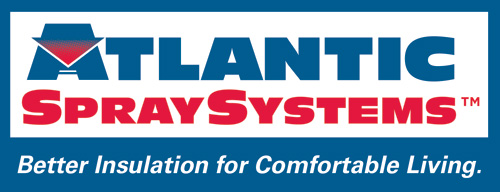Did you Know- Your Crawl Space Might Need to be Encapsulated if your Builder Took These Shortcuts!
Top 8 Reasons to Replace Your Old Attic Insulation: Save Your Roof
June 10, 2024Top 8 Reasons to Replace Your Old Attic Insulation: Be Cool (Comfortable cool)
June 26, 2024Did You Know? Your Crawl Space Might Need to be Encapsulated if your Builder Took These Shortcuts!
In a perfect world, your house would get built, and you would never have to worry about anything. You would just buy the house, you’d live in it, never have to pay any money to maintain it, and when it came to your home, life would be stress free. But unfortunately, we live in reality, and the reality is that, well….things break. Things leak, things rot, and thing have to be replaced. Could that even be prevented….well it could, but today we will peel back the onion on our area- crawl spaces. Why should you even have to think about getting them sealed down- or encapsulated? Here is why, in this “Did You Know”!
If you happened to be involved in the building of your home, and knew a few things about crawlspaces and the myriad of nightmares that can come from them (we’re not talking about spiders and cobwebs), you might have actually made your builder take some steps or even made sealing or encapsulating your crawl part of the deal when the plans and budget were laid out for the house. Your builder (like our builder customers who make insulation and crawlspace moisture control a priority), may even have done this on their own. But in the majority of cases, this is not true. The crawlspace, despite being the source of so many long term problems from buckling floors, rotting joists, drafts, moisture damages, etc., often gets the short end of the budget. Here are just some of the ways many builders (especially the corporate ones) save money at your expense later- much later- after your builder or developer is long forgotten- and outside the warranty window:
- The bottom of your crawlspace is just dirt. Is that bad? It’s not always that bad, but that dirt can soak up moisture in the air and can get wet and stay wet for months from flooding or driven rain, and can slowly that release that moisture over time into the air of your crawlspace. And you know what doesn’t do well with water? Wood. Guess what the structure of your house is made of. You are catching on. So why didn’t your builder or past owner put a concrete floor on your crawl….that would stop that, right? Yes, but that would cost money, money that wouldn’t help sell the home nearly as much as raised panel wainscoting or a luxury kitchen. So dirt it is.
- What are the walls of the majority of basements or crawlspace foundations made out of? Most of them are cinder block. Cinder block, though, is one of the most porous and least insulating of all possible concrete barriers. That sounds silly, so why use them? Right again. Cheap and Easy. Cinder block crawls are a waterproofing company’s best friend. Your basement is damp and dingy not because it is underground, it’s because the builder used cheap cinder block to build the walls!
So is the builder wrong for doing this? Technically no….it’s your county codes department. They could demand more stringent requirements- but if they did, many builders wouldn’t want to build there, because the houses they are trying to sell would become too expensive and people wouldn’t want to buy them, because their granite island and surround sound system matters more than the far less sexy ‘built to last’. (Note: if your house is newer construction, many areas have made a vapor barrier required by code, so there’s that.) But we digress……
These two construction elements above alone contribute to the most pervasive crawlspace issues. “But what about the crawlspace vents? Those air out my crawlspace, right?” you ask. Sadly, no. In fact those vents can have almost the exact opposite effect many times: warm humid air entering the crawlspace and then hitting the colder ground air in the crawl and condensing, or just letting raw humid air in and around your wood substructure. Even fans installed in the crawl do not provide the perfect environment. The only solution is to SEAL the crawlspace from outside air and that cinder block, and place a barrier between that dirt floor and your house bones.
And that’s where we come in. We don’t want to have to encapsulate your crawl. Honestly, we don’t. We want every crawl we check out to be moisture damage free, with no signs of long term trouble- but again, we live in reality, not fantasy. If we come out to your home for a free consultation and determine your builder did a bang up job and you already have a system in place in your crawl that will keep it dry and moisture free, that’s great! But more than likely we will already be seeing the potential for or even hard evidence of moisture damage. With any luck, we can get in, seal that crawl, and arrest further damage. In some cases, there might need to be some repairs done before we even start, and in the worst of cases, the crawl may need to be considerably rebuilt, after which we can seal it down and make sure you don’t have anymore surprise bills.
In all cases, we will do what we have always done: give you our professional opinion, based on facts, not sales quotas, so you can make the best decision going forward regarding the long term health of your home. We’d love to do that for you. If you’d like a free, no-hassle consultation regarding your existing crawlspace insulation and condition, please reach out– we are here to help with better insulation for comfortable living.
